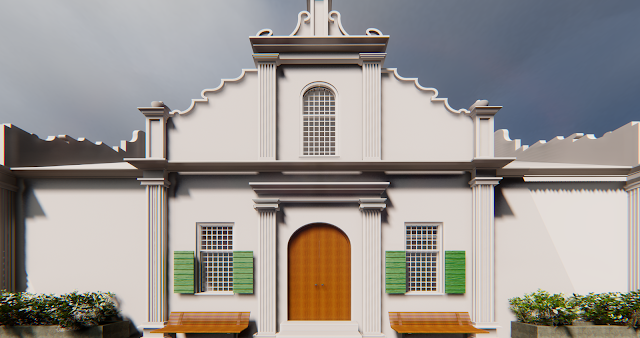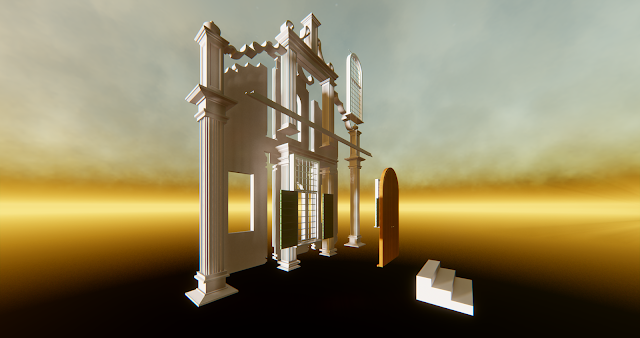Cape Dutch Architecture
"Cape Dutch architecture is a traditional Afrikaner architectural style found
mostly in the Western Cape of South Africa. The style was prominent in the
early days (17th century) of the Cape Colony, and the name derives from the
fact that the initial settlers of the Cape were primarily Dutch. The style has
roots in mediaeval Netherlands, Germany, France and Indonesia.
Houses in this style have a distinctive and recognisable design, with a
prominent feature being the grand, ornately rounded gables, reminiscent of
features in townhouses of Amsterdam built in the Dutch style. The houses are
also usually H-shaped, with the front section of the house usually being
flanked by two wings running perpendicular to it. Furthermore, walls are
whitewashed, and the roofs are thatched.
Most Cape Dutch buildings in Cape Town have been lost to new developments –
particularly to high-rises in the City Bowl during the 1960s. However, the Cape
Dutch tradition can still be seen in many of the farmhouses of the Wine Route,
and historical towns such as Stellenbosch, Swellendam, Tulbagh and
Graaff-Reinet.
One characteristic feature of South African colonial architecture which has
attracted the attention of many observers is the extensive use of gables.
Earlier research has repeatedly sought to justify the term `Cape-Dutch' solely
by comparing the decorative form of these gables to those of Amsterdam.
However, in the second half of the 18th century, the period in which, the
entire development of the South African gable tradition occurs, gable
architecture had gradually ceased to be built in Amsterdam. North of Amsterdam,
along the river Zaan, however, gable design remained vigorous until the capture
of the Cape. South African gables have many features in common with gables
along the river Zaan, in spite of the different materials used." Source
Note: All renderings have been done using Enscape






No comments:
Post a Comment